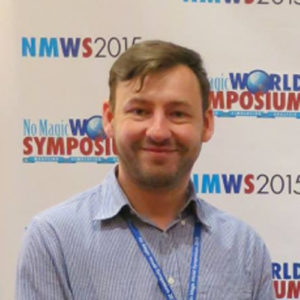Dr. Saulius Pavalkis, PhD

Dr. Saulius Pavalkis, PhD
Chief MBSE Solutions Architect & PLM Product Integrations Manager
Summary of Qualifications and Experience:
- BS in Telecommunication and Electronics (Kaunas University of University)
- MS in Telecommunication Engineering (Kaunas University of Technology)
- PhD in Computer Science and Engineering (Kaunas University of Technology)
- 15 years of experience working on modeling solutions including PLM Product Integrations Management. Former analyst in R&D department core MagicDraw team
- Major areas of expertise include: model-based requirements engineering, data interchange, systems design, MBSE, PLM, SysML, UML, traceability, simulation, modeling solutions, change, and configuration management
- Experience supporting companies adopting MBSE on large and small scale in various domains: automotive, medical devices, defense, aerospace. Companies supported: Ford, Verb Surgical, Raytheon, Orbital ATK, SMEE, UTAS, BAH, SGT, Abbott.
- Experience working on commercial and research projects (including European Union funded for different OMG standards integration) guiding team to create model-based prototypes and working solutions
- Multiple professional certificates: OMG-Certified Systems Modelling Professional, OMG-Certified UML Professional, OMG-Certified Expert in BPM, and ITIL V3
- Multiple research and practical articles in model-based design area. Articles are presented at annual and local INCOSE Conferences, NDIA
- Founder and chief editor of a modelling community blog (blog.nomagic.com) dedicated to sharing practical model-based engineering experience
- No Magic, Inc. representative at INCOSE CAB
Responsibilities:
- Primary technical lead for MBSE solutions
- Development and conduct of training and workshops
- All major PLM product integrations management
ABSTRACT
System Model Simulation – Monte Carlo, Probabilities, and more….
Rapidly increasing scale, dynamism, and vulnerabilities in the systems being engineered to have presented ever-greater challenges. In part of these challenges Systems Engineers started to explore new ways of working and one of the possible solutions is to use models as a basis for the engineered system’s description.
Nowadays Systems Engineers can leverage several modeling languages and tools to their advantage to build system models. However, no matter how you are going to look into a model, it still remains a static description of systems being engineered. To access the full power of modeling, Systems Engineers need to transform the static system descriptions into what we could call live or dynamic model.
During this webinar, we are going to build a live model or in other words – an executable model. The main part will be to explore ways of building an executable model and in addition to that delve into a bit more sophisticated simulation capabilities available with UML, SysML, UAF languages and Catia | No Magic tools. The features which will be covered during this webinar: Monte-Carlo simulation, different distributions, result capturing.
Sessions
